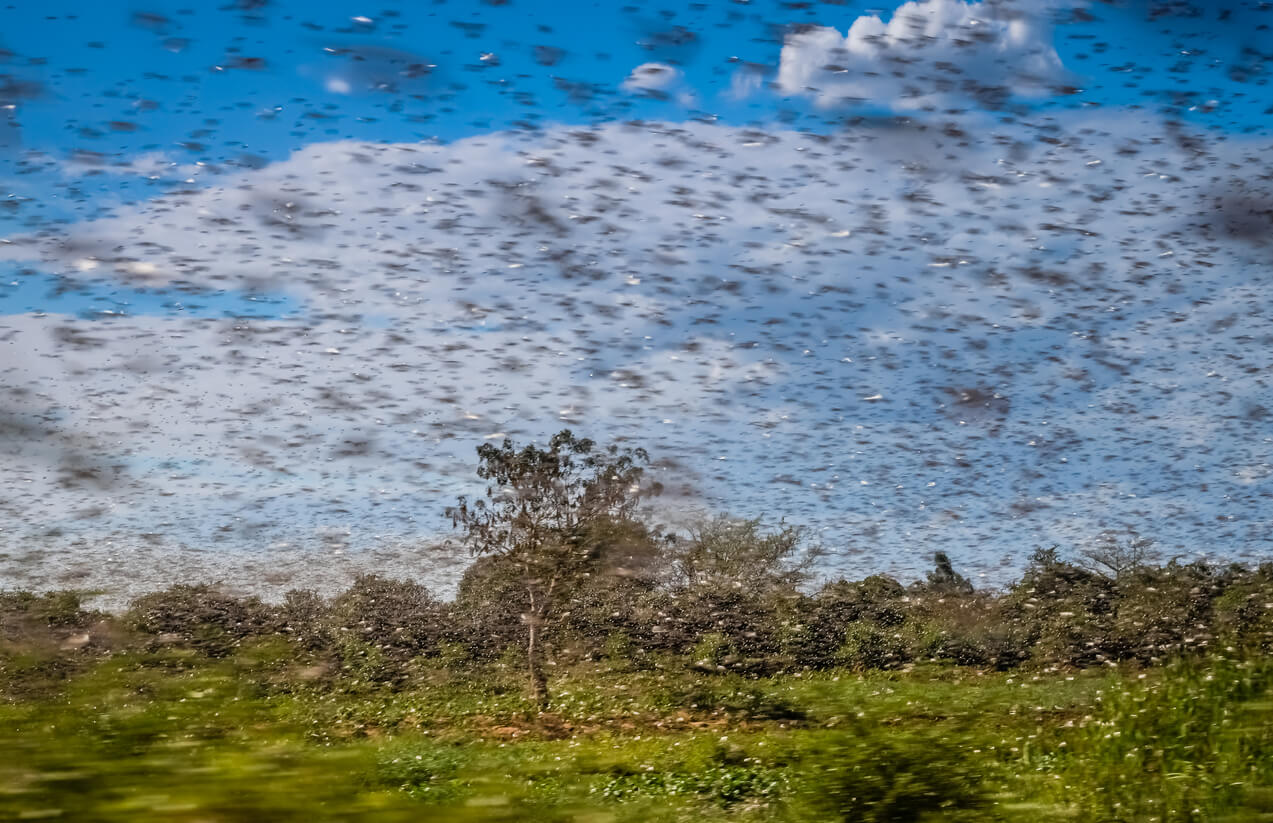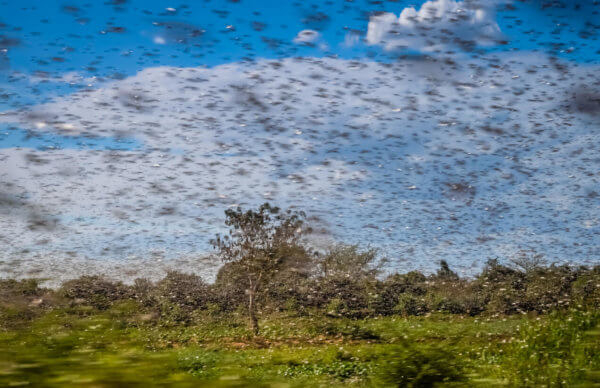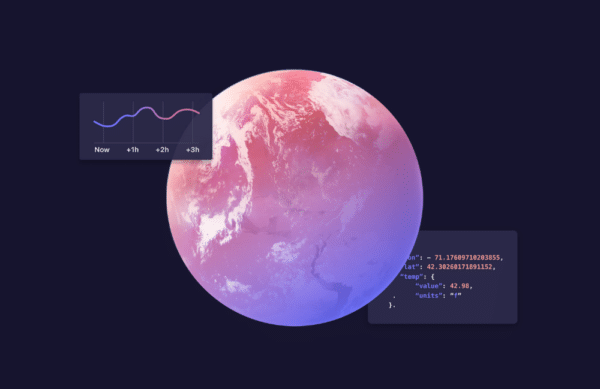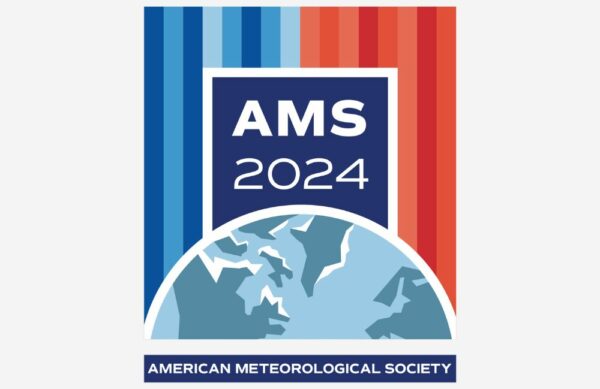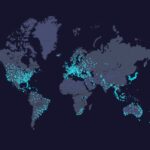We cannot reverse the damage already caused by this locust infestation but we may be able to slow it down and prevent the next one from being so severe. How can hyper-local forecasts be a part of this future?
An Unprecedented Threat With Devastation Continuing to Build
Hundreds of billions of locusts are making their way through East Africa at this very moment, devastating crops and threatening potential famine across regions already fragile due to recent flooding.. While the countries currently most at risk of impact are Ethiopia, Somalia, Kenya, Tanzania and Uganda, the current locust population growth shows no signs of slowing down. Countries in the region have not seen a locust infestation of this magnitude in more than 70 years, with more than 20 million people in the region likely to be affected, according to the UN. The UN FAO has called for $76M from the international community to fund spraying with insecticide. If these measures are not taken, sizeable food assistance programs will need to be put into place as reported by the BBC.
A Cyclone-Fuelled Infestation
The locust infestation across East Africa exemplifies the devastating impacts of shifting weather patterns from the past decade and highlights the need and urgency for innovative solutions and partnership.
The origins of this outbreak can be traced back to the 2018/19 winter along the Red Sea, in Yemen and Oman. Fuelled by the rains brought in by tropical cyclone Luban that produced perfect feeding and breeding grounds for the locusts to flourish into massive populations.
“Locusts are sometimes solitary insects with lifestyles much like grasshoppers. But locusts have another behavioral phase called the gregarious phase. When environmental conditions produce many green plants and promote breeding, locusts can congregate into thick, mobile, ravenous swarms.” – National Geographic
Can Hyper-Local Forecasts Help?
What’s clear is that this outbreak was caused by the weather, and as future weather continues to fuel uncertain conditions it will be more important than ever to address the root cause head on. Frontline teams do regular surveys to pinpoint areas where gregarisation is most likely, typically in semi-arid areas that have received good rains, allowing vegetation to grow. There is massive potential for modern nowcasting and forecasting technology to improve local capabilities. ?
Technology has already contributed massively to progress along with the impressive and coordinated effort of disaster relief organizations such as the UN FAO and local governments, but there is so much more we can do. As we observe these efforts and as an organization dedicated to using state of the art weather technologies to improve lives, the question we are asking is how can we utilize weather innovations to help this cause. For example, could we use real-time weather data to better inform and speed up processes for identifying areas ripe for gregarisation and spray the locusts before they create swarms?
From this question we start to work towards future solutions, partnerships, and possibilities.
We cannot prevent weather events but we can prepare and respond
While the current situation in East Africa will eventually find a conclusion, millions will be impacted, lives likely lost, and hundreds of millions in aid will be needed. The question is, how do we stop this from happening? How do we cure the disease as opposed to just the symptoms?
Predictive weather technology must be a part of the solution, which can identify at risk areas in advance before it’s too late. We cannot prevent weather events but we can predict them and proactively prepare to save and transform lives. By analyzing weather variables like rain, flood, temperature, humidity, across historic, real-time, and future forecasts we can identify which areas are most at risk. From there, weather technology can also help with planning around and navigating flood-ridden roads to access these remote areas of infestation without risk of getting stuck or putting people in hazardous situations.
Most encouraging is we have the capabilities available to us predict at unprecedented spatial resolutions down the hyper-granular level. It is important to note there are still limitations in emerging markets due to underlying infrastructure (to which we are dedicated to improving in partnership with local governments), however, fuelled by the sense of urgency and opportunity in front of us there are significant ways we can help TODAY. For instance, AI-powered weather tools better inform frontline teams, regional locust commissions, and research teams working on solutions to track and slow down current outbreaks while also predicting and preventing future outbreaks.
With early detection and containment comes more control. Once risk areas have been identified they can be easily sprayed in advance. For instance, Uganda has already mobilised thousands of troops to start preparing for the incoming locust swarms and are using a mix of motorised sprayers, drones, and manual sprayers to combat areas at risk, and the same could be done in early detected areas. In addition to being sprayed, at risk areas caught early can be better tracked and managed.
Amidst all these challenges, we see an opportunity to help. Our technology partner www.tomorrow.io has state of the art predictive weather and data capabilities, models, and tools for turning weather into action and decision making to help people take control. Used by global brands like Uber (helping with predictive transportation strategy), and JetBlue (improving operational efficiency), Tomorrow.io has the capability to run historic, real-time, and future forecast models to solve the locust nightmare once and for all. Now is the time.
If we work together, we can bring hope to billions.
At www.tomorrow.io.org we are building the foundations to support local partners who are eager to drive socio-economic transformation in their regions through technology-driven weather services. We work at a community-level to understand local needs and opportunities for weather-triggered action on the ground and we work with local governments, NGOs and high impact organizations to co-build local pathways for weather technology solutions that can be sustained locally to empower their citizens.
There has been vast improvements globally across the weather, but as highlighted at the recent Great 54th Greater Horn of Africa Climate Outlook Forum ”we now need to move from science to action and reach users so they can apply it”. It is those who are vulnerable who need us the most. This is the motivation behind Tomorrow.io.org. If we work together to leverage our unique strengths, we can and will do better, and in turn together bring hope to billions through better weather information.
If you are working on a development project that, with better weather information, could help you save more lives or help more people, please contact us. We are on standby to help.
